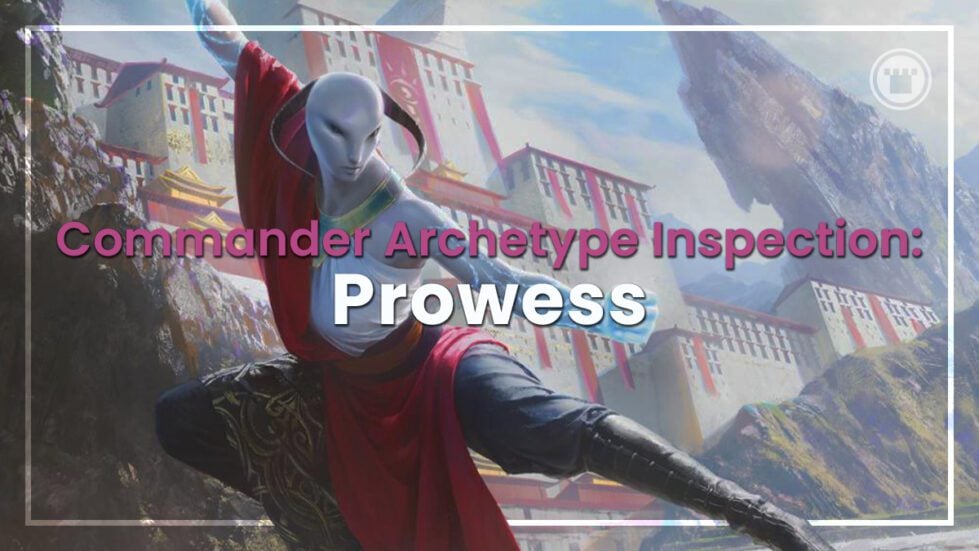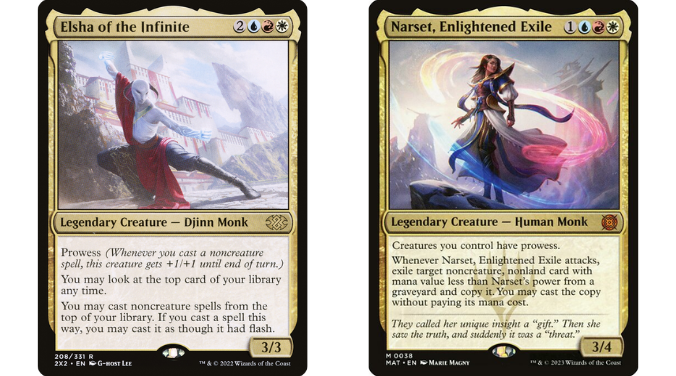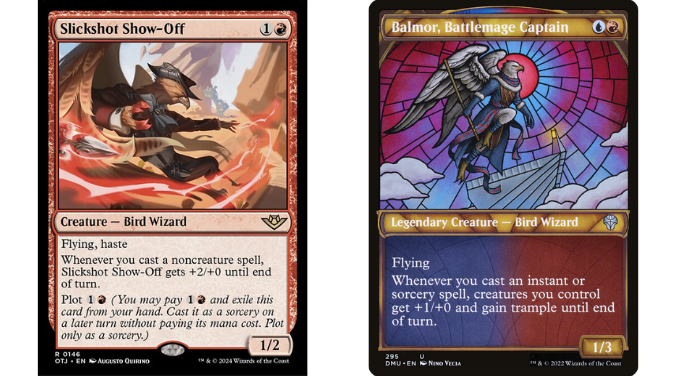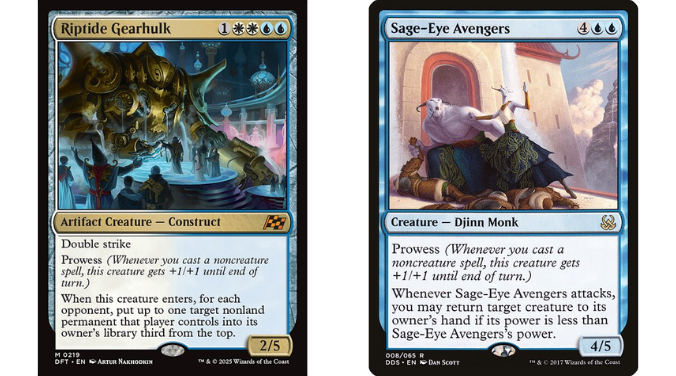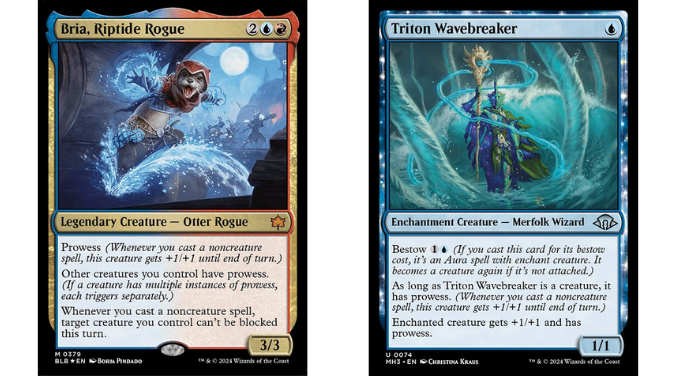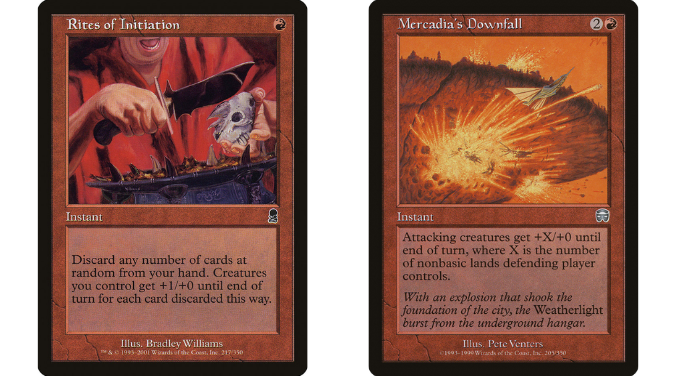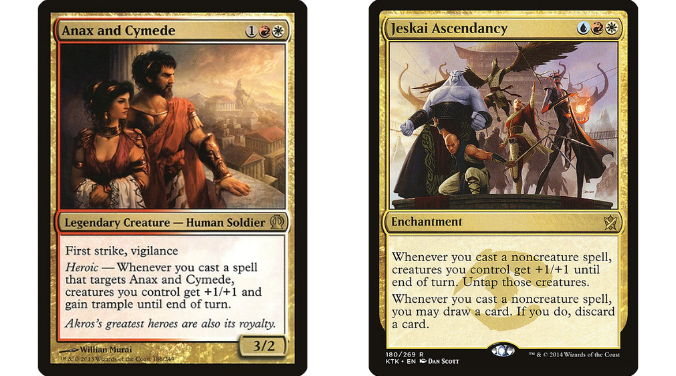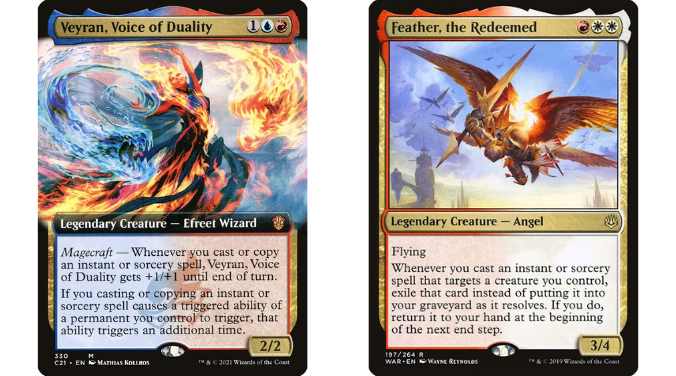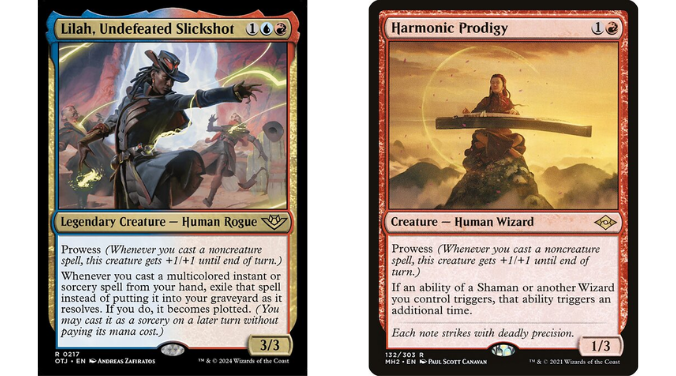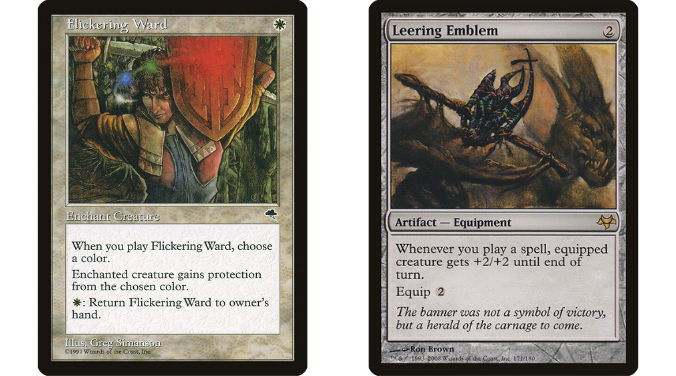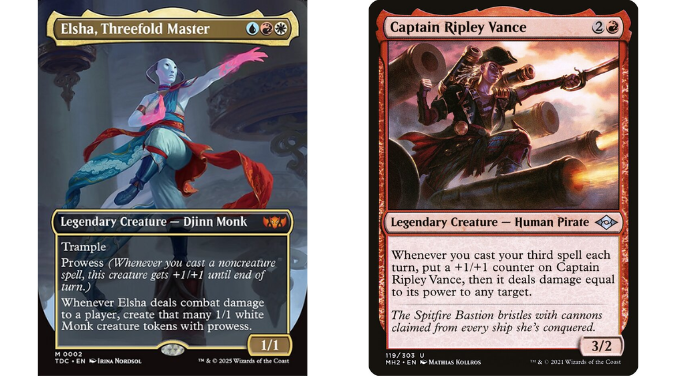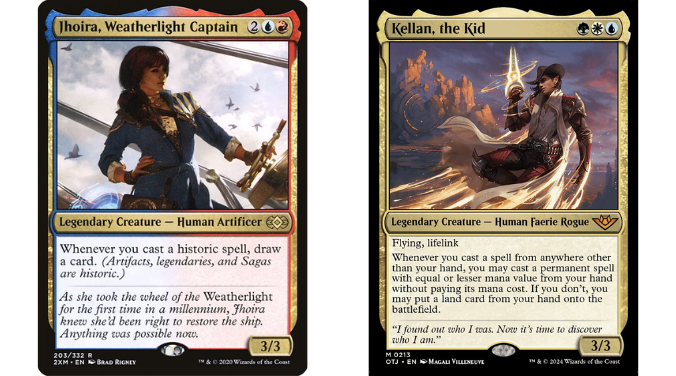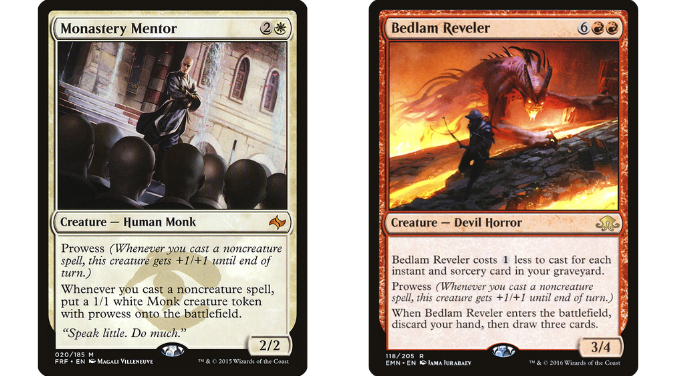Over the years, Magic has invented a multitude of mechanics to build decks around, each with its own unique advantages, dedicated support cards, and memorable payoffs. But when all of those archetypes are thrown together into the grand melting pot of Commander, a few top-tier choices stand out. They offer versatile deck building options, consistent performance across different areas of the game and power ceilings which border on unbeatable.
With Tarkir: Dragonstorm the hot new thing, I thought I’d take the chance to talk about the most successful deckbuilding theme popularized by that plane. No, not dragon typal – Tarkir didn’t invent that. I’m talking about the Jeskai signature mechanic: prowess!
THE THINKING MAN’S AGGRO
Prowess has been one of the most successful mechanic designs in modern Magic history. It’s used to represent creatures whose blows are enhanced either by magic techniques or complex martial arts, rather than raw strength. The fact that this keyword naturally allows for a lot of bluffs and dynamic shifts in tempo while attacking further cements its fast-paced, high-skill appeal.
Building decks around a specific mechanic should mean that identifying relevant card effects is fairly straightforward – just start with that rules text and work outwards. Obviously the most important pool of cards is the creatures which actually have prowess. This should also include any other creatures whose triggered abilities boost their combat power when casting non-creature spells, like Slickshot Show-Off.
We’re especially incentivized to pick one of these as our commander, as having such a consistent and uncapped source of potential combat damage creates a constant threat of commander damage kills for basically no effort. For the rest of our army, cheaper bodies are generally better – but it’s also potentially worth overpaying for a creature with combat keywords or other impactful utility.
There’s also the smaller yet important set of cards which can grant creatures prowess. Normally you’d have some tricky calculations over the value of these effects in a deck where many of your creatures will already have the keyword in question. However, multiple instances of prowess actually stack to provide bigger buffs, so cards like these are pure upside for this archetype.
Lastly, you need to fill a lot of your spell slots with cards there mainly to trigger prowess. Choosing from the entire list of non-creature spells means we have almost limitless choices available, but usually the best picks are effects that support a creature-combat plan (like combat tricks or defensive interaction), or which generate resources to fuel more spellcasting.
The emphasis on spells which can be chained together in such a flurry means there’s significant overlap between Prowess decklists and the Storm archetype we looked at in a prior instance of this series. Ultimately though, the Prowess player will prioritise relevant spell effects over raw efficiency, while Storm players do the opposite.
RIVAL SCHOOLS
Key decisions like which prowess creatures to run, and what sort of effects you consider priorities, should reflect how you plan on using prowess to actually win the game.
The first kind of gameplan uses prowess the way it is most often used in Constructed aggro. If your whole army has prowess, then prowess triggers become one of the most hyper-efficient ways to team pump! Ideally you’re generating those triggers with spells which themselves add a lot of damage very cheaply to maximise your outcome.
Like any go-wide strategy (which is effectively what we’re doing here), the ideal scenario is to be turning each card into multiple bodies with token production. There’s not that many ways to generate tokens with prowess, but there ARE mechanics like Heroic or Jeskai Ascendancy which can simulate your team all having prowess very easily and keep that all-important efficiency high.
The second kind of deck is more commander-centric, using prowess to try and win by commander damage a significant amount of the time. This will still often paired with secondary combo wincons, most often storm combo or other options which overlap significantly with the prowess card pool.
The third kind of prowess deck is not especially concerned with combat at all! Instead we take some liberties with the definition of that title to run cast-triggers with other benefits, like drawing more cards or creating tokens. This is what people most often call a “spell-slinger deck”, something even more closely adjacent to or overlapping with Storm.
These decks still value actual prowess where it appears on creatures with a relevant power level and other relevant abilities. Even an incidental ability to pressure life totals through combat is a great addition to any deck when it comes at such a low opportunity cost!
SPECIALISE FOR SUCCESS
The huge range of cards that can trigger prowess is a major strength of this archetype. It’s especially helpful when you’re trying to be as aggressive and low-cost as possible; the fact you can mix in everything from equipment to cantrips to combat tricks really helps you keep the overall card quality of your spells as high as possible.
But electing to narrow your own card pool can also be rewarding, unlocking a second pool of synergies around whatever specific type of non-creature spells you specialize in. The benefits of using instants to trigger prowess at different timings matters less in multiplayer, so there’s little to lose and much to gain by turning yourself into an artifacts-matter or enchantments-matter deck on the side.
Equipments and aura synergies are obviously powerful extensions of the theme for any commander with prowess, since they’re so good at cranking up the threat of commander damage. But the pools of artifact and enchantment support cards are so deep that you don’t really need a particular reason to piggyback some prowess cards on top of them if you simply decide that’s the direction you’d like to take the deck.
You don’t need to change your commander selection to make this style of deck work, but there are some prowess legends which are subtly optimized for it. Captain Ripley Vance and the new Elsha, Threefold Master are good examples where the permanent power boosts of equipment and auras let you continuously ramp up the impact of their abilities turn after turn.
Alternatively, tuning your spell selection to match a commander like Jhoira, Weatherlight Captain, Sram, Senior Edificer or Kellan the Kid can unlock a hyper-efficient stream of additional draws and casts to trigger the rest of your prowess payoffs.
The range of options for building around prowess is truly as open as the range of non-creature spells that can enable it.
SPEED AND PRECISION
Any mechanic which emphasises combat damage is fighting an uphill battle to achieve relevance in multiplayer Commander. But since prowess is so flexible in it synergies and rewards the kind of explosive play patterns already dominant in the format, it can easily be the exception to that rule.
Even if it’s more likely to be a source of bonus value or side benefit than the main defining pillar of a deck, providing another source of pressure or combat potential at such low deckbuilding cost – especially one
that’s unpredictable to opponents – makes it an excellent bonus to look for.
And when you do decide to lock in and build your deck around Prowess first and foremost, it easily demonstrates its potential to create exciting, skillful passages of play.

Tom’s fate was sealed in 7th grade when his friend lent him a pile of commons to play Magic. He quickly picked up Boros and Orzhov decks in Ravnica block and has remained a staunch white magician ever since. A fan of all Constructed formats, he enjoys studying the history of the tournament meta. He specializes in midrange decks, especially Death & Taxes and Martyr Proc. One day, he swears he will win an MCQ with Evershrike. Ask him how at @AWanderingBard, or watch him stream Magic at twitch.tv/TheWanderingBard.

